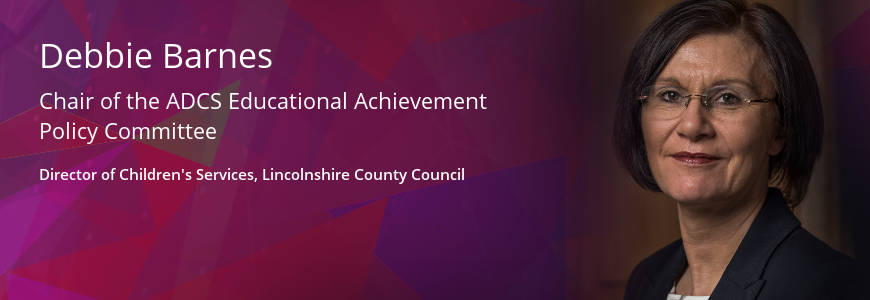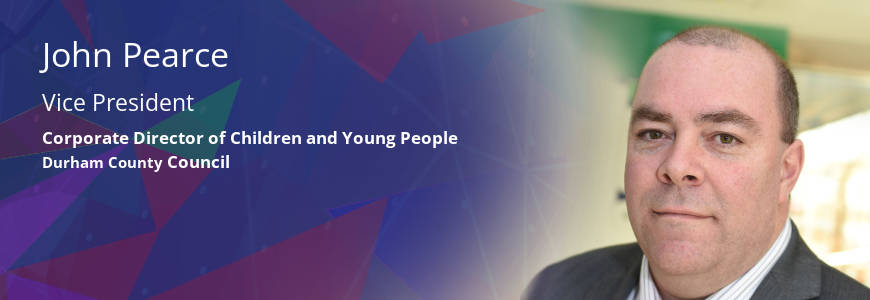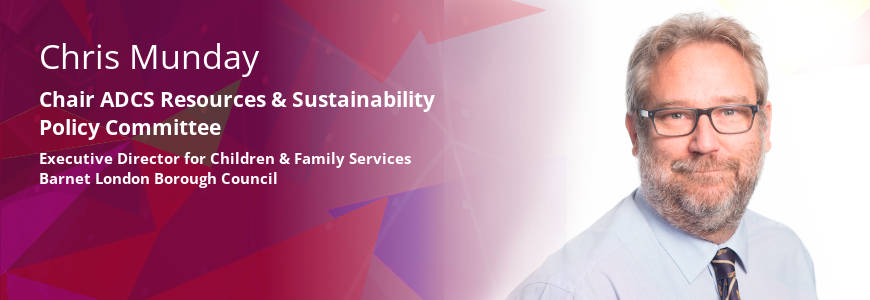Children’s Funding – It’s “Code Red!”

“Yesterday, upon the stair,
I met a man who wasn’t there.
He wasn’t there again today,
I wish, I wish he’d go away…”
(A short excerpt from “Antigonish” by William Hughes Mearns.)
As a child I was always intrigued, and slightly spooked, by this poem. Little did I know that it was preparation for how it feels to be a DCS in 2018, when making arguments about the funding gap for children’s services.
By September, budget planning is well underway in local authorities and I imagine many of us are having similar experiences contemplating unpalatable and counterproductive cuts to preventative services, in order to protect already overstretched statutory services.
We do so against a background of national debate about children’s services funding. For the first time this summer, we have seen children’s funding commanding as much national attention as adult services and health. While this is a good thing, some of the responses from the DfE, Treasury and Ministers have been less encouraging. Put simply, the general response has been, “funding gap? Prove it – it looks more like variable performance to us”.
That’s where “the man who wasn’t there” comes in. Whereas local authorities experience stumbling into the funding gap and its consequences daily, it seems to me central government doesn’t see it that way at all. The gap they see is one of performance, not funding. That is because they see some local authorities are performing better than others with a similar level of resources, leading them to conclude, QED, that the funding gap is not there. Well if it isn’t, “I wish, I wish it would go away” to paraphrase Mearns.
Leaving aside for the moment whether this test is being applied to any other part of the public sector, let’s briefly consider the evidence on both sides of this argument.
On the one hand, we have various national reports confirming the lived experience of most of us i.e., 40-60% cuts in real terms to non-statutory services over 10 years, including early help, years of rising demand across SEND, early years, child in need and child protection as well as children in care. Rises in child poverty and homelessness, the impact of the welfare reforms and continued financial pressure on families with children. In the face of this, most councils have chosen to divert resources from other services to protect children’s social care.
On the other hand, we have the argument that, measured by Ofsted judgements, local authorities perform variably well with similar resources. Some authorities are judged ‘outstanding’ on current funding, therefore what’s to prevent all of us doing so?
While we know good safeguarding performance isn’t all down to money, we need to find a way to counter this false dichotomy between Ofsted performance and funding. At the same time, we must work together to secure greater investment in children’s futures as a matter of urgency.
Happily, this summer has given some helpful evidence. Our colleagues in North Yorkshire, East Sussex and Bexley have achieved the first overall ‘outstanding’ judgements of the new ILACS regime (take a bow Stuart, Stuart and Jacky!). Those reports show three authorities where great social work is underpinned by well-integrated early help and preventative services, put together in a planned way by outstanding leaders. Without those early help and preventative services, outstanding safeguarding performance becomes impossible, QED. Leaders of outstanding authorities are now able to evidence that they will not have enough money to maintain that performance.
The DfE’s own actions on performance support this. The huge extra resources thrown at intervention and the up-front investment required by the Innovation Programme show that change and improvement need extra resources, and are not scale-able without it… A question remains around what will happen to services funded through the Innovation Programme when budgets are tight and time limited pots of funding run out.
When I worked in Australia we had a wonderfully robust framework for managing the risk of bush fires to rural schools. On “high risk” fire days, when strong winds and high temperatures arrived, we would declare “Code Red”, and a smooth and well organised evacuation of schools would take place. As we contemplate our perverse options to balance the budget next year, it is surely time to declare a “Code Red” for children’s services funding nationally.
“The man that wasn’t there” is here now, and larger than life.
Related Blog Articles
Having recently had our Special Educational Needs and Disabilities (SEND)...
In General
Last week, Parents Against Child Exploitation (PACE) published a piece of...
In Safeguarding & Child Protection
Blackburn with Darwen has found itself in the media spotlight recently. The high...
In General
In preparation for writing this blog I looked back to my last one in July which...
In General
We are coming to that time of year when letters to Father Christmas have been...
In General
On 22 May I joined many other people in watching a Panorama programme exposing...
In General
I feel we are at the end of the beginning, rather than the beginning of the end....
In General
Like the Tokyo Olympics, Wimbledon and Glastonbury, the pandemic delayed another...
In Safeguarding & Child Protection
As my year as ADCS President draws to a close, I’ve spent some time reflecting...
In General
Earlier this year I had the pleasure of joining members of ADCS Council of...
In Funding
The cost of living crisis is starting to bite and will have a huge impact on...
In General
Next month, the Chancellor will deliver his Autumn Statement, outlining...
In Funding
This is my first blog for ADCS and I would, firstly, like to thank colleagues...
In Funding
As I write this blog, we are in the final days of the various general election...













